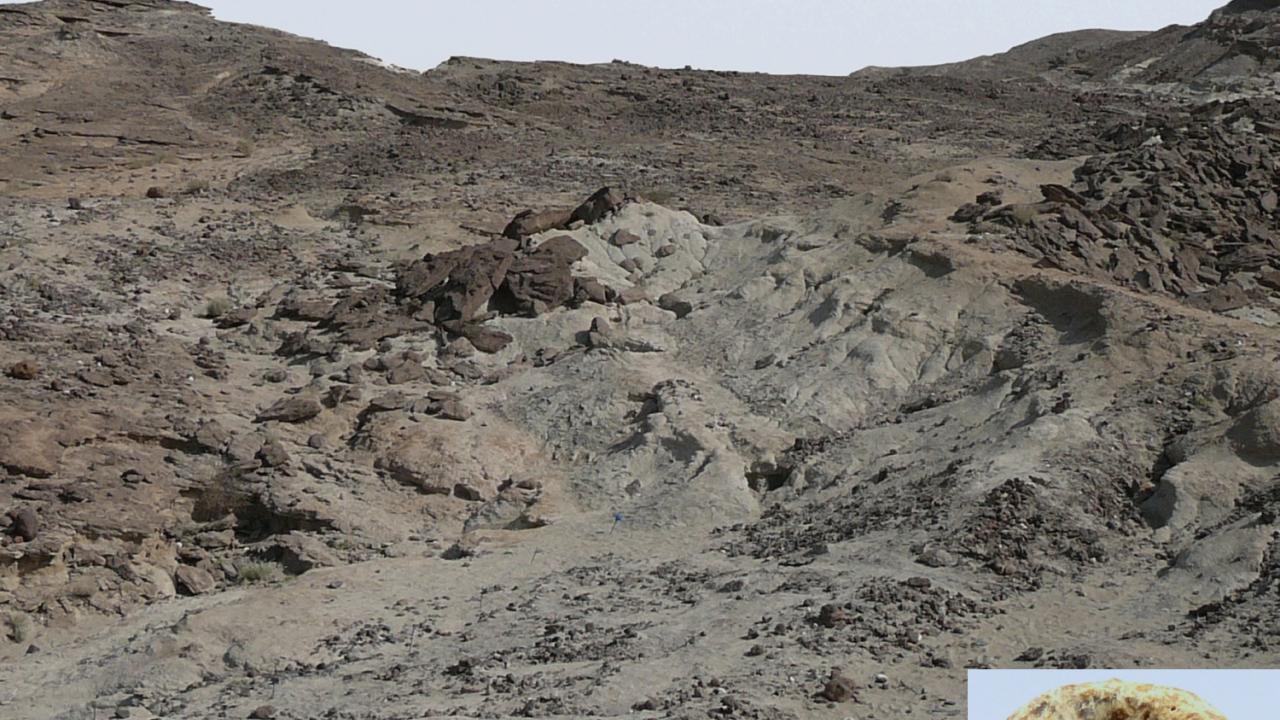
Under the brutal, 48°C December heat of the Eritrean desert of Danakil, the archaeologists were scanning the ground for fossils when Hussein, their local guide, spotted something in the sands.
It was different from the skull fragments they had been finding since their first visit the previous year, near the location of a famous 1-million-year-old intact skull discovered 10 years before.
The specimen was a human molar, the first tooth discovered at the archaeological site of Mulhuli-Amo. "It was a great moment," recalled ICTP Multidisciplinary Laboratory (MLab) scientist Clément Zanolli. Now, the tooth has become an important clue in a relatively empty corner of the jigsaw puzzle of human evolution that reveals the diversity of humans living in Africa at the time.
It is one of three Eritrean human teeth from about 1 million years ago, a time of scant evidence in the human fossil record, that despite their differences in shape have enough similarities to hint at a common ancestor. The wealth of information hidden in the teeth revealed by high-tech medical imaging equipment is presented in a new paper in the Journal of Human Evolution by lead author Zanolli and his collaborators.
Our first ancestors of the genus Homo appeared in the early Pleistocene, 2.6 to .8 million years ago. Unfortunately, there are few fossils dating from 1.4 to .8 million years ago, a critical time when the species Homo erectus/ergaster began to fade and give rise to a more direct ancestor, Homo heidelbergensis. Teeth from this period can thus provide important clues as to how this transition occurred.
Zanolli and his colleagues examined the teeth at the campsite in Eritrea and then exported them to Italy for further analysis in Trieste and Rome. In Trieste, the Elettra synchrotron, a powerful X-ray machine, gave a detailed picture of the teeth which was further refined by Zanolli at the MLab. He used a different type of X-ray machine that is less powerful but better at imaging tissues inside the teeth that have been altered in the fossilisation process. The fine-grained images of the teeth generated by the X-ray technology allowed for a comparison that hinted at the evolutionary linkages between them and previously analysed samples.
Finally, the specimens underwent a micro-MRI scan in Rome that captured the growth lines in the teeth, like the rings on a tree, which reveal how the teeth developed in our ancestors' mouths. These pictures, from the first-ever use of the technique on fossil specimens, suggested that ancient humans' dental histories were not so different from our own.
The complementary nature of these three imaging techniques gives researchers more power than before to extract data from the teeth while leaving them intact. "3D virtual tooth imaging potentially discloses new promising perspectives in the study of human evolution with no risks to alter the physical integrity of the fossil specimens," Zanolli said.
For Zanolli, both lab and field work have their merits. "Both are quite entertaining," he said. "Either the thrill to find a unique, exceptional fossil in Africa, or the exciting moment when I am analyzing the virtual record and find that these specimens are very different from what we know and fill a gap in our knowledge about human evolution.
















